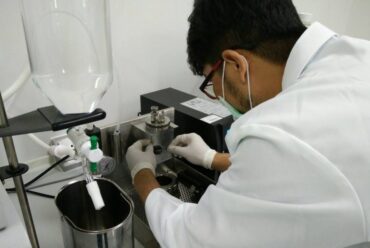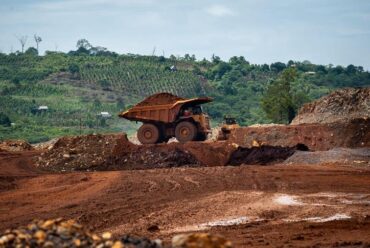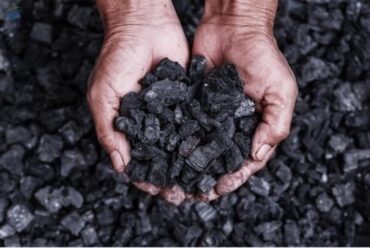What is Coal? Benefits & Origins of Coal
One of the benefits of coal is that it is used as a source of fuel for power plants. However, in order to become energy, it needs to be first converted into hot steam through several stages.
WHAT IS COAL?
Coal is a collection of plant remains that have died and have not had time to undergo a complete decay process. Then it will experience a process that is well preserved in oxygen-free conditions.
For example coal found in a very fine lake. Where the stockpiling process occurs at the same time as tectonic shifts that allow plant remains to accumulate in the soil very deep.
As a result of this accumulation, the plant material is exposed to high temperatures and pressures, causing chemical reactions to occur. During that phase the percentage of hydrogen and oxygen will decrease, while the carbon will increase.
ORIGIN OF COAL
Generally, various forms of coal will be easily found in forest areas, especially on the islands of Kalimantan and Sumatra. Based on the occurrence there are 2 theories that describe its formation, namely in situ and drift.
INSITU THEORY
Based on the institute theory, coal comes from plants. These dead trees will not undergo complete decay and eventually turn into fossils that form organic sediments.
It should be noted that the decomposition process occurs in the forest, which is where the coal was formed and where it was originally found. The process is almost the same as making tape made from cassava.
DRIFT THEORY
Meanwhile, according to the drift theory that fossils in plants do not come from the place where they were originally formed. But the coal has undergone a process of displacement in the delta area.
However, experts need to know that the coal formed by drift theory is of poor quality. Meanwhile, the characteristics are that the layer is thin, not continuous and has a lot of impurities.
Also read: Various Types and Quality of Coal
TYPES OF COAL
Before discussing further the benefits of coal, it would be nice to know in advance the types and characteristics. For more detailed information see the explanation below.
LIGNITE COAL
Based on research, lignite has been formed since 251 million years ago or from the Mesozoic and Cenozoic times. This coal has a low quality, this is because it is the first form of the coalification process.
Characteristics found in lignite include brown color, has little energy, contains about 9%-19% dust, metallic elements 60%-70%. The benefit of this type of coal is that it is used as fuel for steam power plants.
ANTRACITE COAL
The characteristic of anthracite is that it has a fairly high carbon content, including coal with a low moisture content, which is the best heating fuel. Usually used for power generation.
While the characteristics of anthracite are glossy black color, very little water, ash, sulfur content and have a very high calorific value. You need to know that the texture of this coal is denser than the bituminous coral type.
BITUMINOUS COAL
This type of coal is formed from sub-bituminous coal which is buried very deep, causing the texture to become hard and black in color. For the carbon content itself can reach 80% of the total weight.
Due to its better quality than lignite, it is not surprising that bituminous coal is the most widely used in industry and steam power plants. While the characteristics include having fixed carbon around 60-80% capable of producing energy of 35 Mj/Kg.
SUB BITUMINOUS COAL
Although it has a slightly darker color than lignite, sub bituminous coal cannot be called perfect coal. That’s because the texture is still very soft. Generally, this coal is used by the community as a steam power plant.
While the carbon content in it is around 40-60%. Although it can be said a little, but the texture is denser than lignite, so the mass is also heavy. So do not be surprised if this coal has a lot of energy.
Also read: How is the process of the formation of coal until it becomes fuel
BENEFITS OF COAL FOR DAILY LIFE
The benefits of coal are also widely used by the community to meet daily needs such as a substitute for gas fuel for cooking and space heating. But that’s not all. Here are some of its uses.
- The first benefit of coal is to support the aluminum industry.
- Making steel products industry.
- The next benefit of coal is that it is used as raw material for making cement.
- Help the paper industry.
- Produce gas products.
- The last benefit of coal is as a fuel for transportation.
HOW IS THE STAGE FOR COAL ESTABLISHMENT?
After knowing the benefits of coal, it is necessary to know that the formation process is generally carried out in two stages, namely peat and coal. For a more detailed discussion, read the article below.
PEATIFICATION STAGE
Peatification is the stage where plant remains that have been stored and collected in oxygen-free conditions. Later the material in the plant will release several elements such as H, N, O and C.
Then these elements are formed in compounds of CO2, H2O and NH3 to become humus. The next stage is anaerobic bacteria and fungi that will turn the pile of plant remains into peat.
2. COALIFICATION STAGE
The coalification stage is a combination of biological, physical and chemical processes. Where it can occur due to the influence of loading from the sedimentary processes that cover it such as temperature, pressure and time on the organic components of peat.
In this process the percentage of carbon increases, while oxygen and hydrogen decrease. In this stage it will produce coal with various levels of maturity of the organic material.
WHAT FACTORS INFLUENCE COAL FORMATION?
Not only as a power plant, the benefits of coal in liquid form can be used for fuel. However, it should be noted that in the formation process there are three factors, namely temperature, pressure and age.
The quality of coal deposits determined by pressure, temperature and time is often referred to as organic quality. Where the process started from 360 to 290 million years ago. starting from plants that settle and then turn into peat, brown coal.
After getting the influence of temperature and pressure for a long time, the young coal will experience changes gradually and increase its organic quality.
It is important to know that although the benefits of coal are many, its use should not be excessive, but it must still maintain its sustainability. Moreover, these natural resources are non-renewable.







